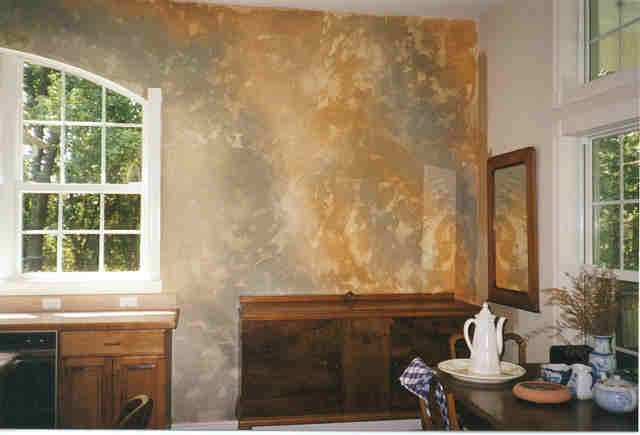AGENT LICENSE ID
10505
BROKERAGE LICENSE ID
10505

Lou Salvino
President
Office:
Phone:
Address:
7500 Martin Grove Road, Unit 7, 2nd Floor, Vaughan, Ontario
Faux Finishes
3/18/2013

Paint is the most versatile tool homeowners have for changing the look of a room, piece of furniture or accessory. To help you push the possibilites of paint even further, below are introductions to four faux finishes that should spark your creativity.
Sponging
Ideal for novices, sponging is the easiest of faux-finishing techniques. Mistakes are easily corrected, supplies are inexpensive and cleanup is easy, making sponging ideal in homes with children.
The effect of sponging is a textured, mottled look, which is achieved by applying differing shades of paint, using a damp sponge, over top of a solid base coat. A natural sea sponge is essential, as synthetic sponges create too structed a pattern.
This technique works best on walls, but can also be used on furniture. As an added bonus, sponging is helpful in camouflaging surface imperfections, where regular paint jobs emphasize them.
Ragging
Like sponging, ragging requires relatively little artistic skill and can be easily retouched should you make a mistake during application or should your child decide to do a little painting of his or her own.
The ragging technique produces a soft appearance that mimics fabric. This effect is created by applying a solid base coat, then using a rag to apply a glaze color on top. Your "rag" can be almost anything: a t-shirt, plastic bags, lace, chamois...Note that different materials create different effects.
Ragging is a technique most commonly used on walls, but can be applied to furniture. Similar to sponging, ragging is a forgiving finish, helpful in hiding surface imperfections.
Stippling
A subtler effect than sponging or ragging, strippling requires a finer touch and is slightly more difficult to master. To make the process easier, work as a team: one person to apply the glaze, the other to stipple it.
Stippling results in a fine, grainy appearance similar to that of suede. The effect is achieved by applying a solid base coat, then using a stippling brush, whose stiff bristles are specifically designed for this application, to stab on a glaze coat of a slightly different shade.
This technique is a great treatment for walls, trim, furniture and accessories. Unlike sponging and ragging, which mask imperfections, stippling emphasizes flaws. Smooth, well-prepared surfaces are a must.
Marbling
This technique requires greater skill and patience than those listed above, but the effect - an elegant, luxurious look - is well worth the time and effort, especially when you weigh the cost of marbling against paying for the real thing.
Marbling is a process that involves replicating the patterns and hues of real marble by applying layers of tinted glaze on top of a base coat. The veined look that characterizes many marbles is usually achieved with the help of a long feather or small, artist's paintbrush.
Marbling lends itself well to a multitude of applications: table tops, fireplace surrounds, floors, moldings and much more. A surface free of imperfections is paramount for a high-quality finish.




























